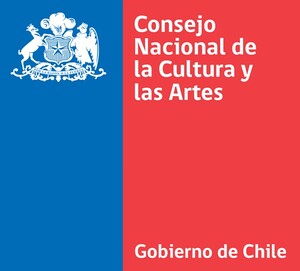The National Council of Culture and Arts Chile is delighted to announce that artist Bernardo Oyarzún and curator Ticio Escobar have been selected to represent Chile at the 57th Venice Biennale 2017.
Oyarzún’s project was selected for its strong concept, including the highly relevant theme of the current representation of the Mapuche community, a group of indigenous inhabitants of southcentral Chile and southwestern Argentina. The exhibition, entitled Werken, will feature an impressive installation of over 1,500 Mapuche masks, traditionally used in ceremonies, located in the centre of the room, forming a figure of irregular contours which will occupy approximately 10 x 11 meters. The walls of the room will feature red LED scroll signs that will display 6,907 Mapuche surnames. Oyarzún’s work often combines anthropological, social and historical elements in order to present a critique of Chilean culture and society.
Curator Ticio Escobar is an academic, art critic and cultural promoter. In 1979 he founded the Museo del Barro (Museum of Pottery) in Asunción with the objective of preserving Paraguayan culture, and in the same year founded the Museo de Arte Indígena, Centro de Artes Visuales (Museum for Indigenous Art, Centre of Visual Art), of which he was director until 2008. He is currently the Director of the Centre for Visual Arts at Museo del Barro.
The selection was conducted through a call for curatorial proposals from Chile or any other Latin American country, held by the National Council for Culture and Arts (CNCA), through its Department of International Affairs and the Macro Area of Visual Arts. More than 20 projects were submitted and evaluated by an international jury including:
Cuachtémoc Medina, Mexican theorist and curator, Chief Curator MUAC (Museo Universitario Arte Contemporáneo-UNAM) and Manifesta 9
Ivo Mesquita, Brazilian curator and art critic, Curator of the 28th São Paulo Biennale
Monica Bengoa, Chilean artist and academic, participant of the Venice Biennale 2007
Gonzalo Díaz, Chilean artist and academic, participant of the Venice Biennale 2005
Nelly Richard, theorist, curator of the Chilean Pavilion at the 2015 Venice Biennale
Emilio Lamarca, diplomat, arts manager, responsible for the first pavilion of Chile at the Venice Biennale
Gaspar Galáz, artist, academic and theorist
Mr. Ernesto Ottone, Minister of Culture of Chile, said: “We are extremely happy with the decision made by the jury. I have admired the work of Bernardo Oyarzún for many years and am very excited about this project. Oyarzún explores the relationship between contemporary art and indigenous peoples, and I think this project will offer an important insight into the subject.”
According to Bernardo Oyarzún: “The mask is a game of representation and every gesture is significant. These are like the masks of Greek theatre: some have strong expressions and others, softer. They are theatrical. This project will create a dialogue that will depend on each spectator. Viewers will feel the weight of the phantasmagoric imaginary.”
Chile’s participation at the 57th International Art Exhibition in Venice is commissioned by the National Council of Culture and the Arts (CNCA) and organized in collaboration with the Ministry of Foreign Affairs, through its Cultural Affairs Bureau (DIRAC) and Fundación Imagen de Chile.
The artist
Bernardo Oyarzún was born in 1963 in the province of Los Muermos in the south of Chile. He currently lives and works in Santiago. His work is inserted in a proletarian context, it’s references are taken from the marginal sectors of society and it has an anthropological basis that is associated with Latin American identity, its native roots and mestizaje. He combines anthropological, social, historical and ethnical elements in order to present, in a critical way, Chilean culture and society. For his installations he commonly uses documents and photographs of his personal history and origins, which are linked to the native forests of southern Chile and Mapuche culture, indigenous inhabitants of south-central Chile and southwestern Argentina. His breakthrough was Bajo Sospecha (Under Suspension, 1998), an exhibition inspired by a past event, when he was arrested by Chilean police after being confused with a criminal. Oyarzún has exhibited at 18 solo shows in Chile and abroad, as well as 30 international exhibitions and biennales.
The curator
Ticio Escobar is a curator, academic, art critic and cultural promoter. He was born in Asuncion, capital of the Republic of Paraguay on February 9, 1947. Between 1971 and 1989, Escobar was a university professor in the fields of philosophy of law, mathematical logic, philosophical anthropology, history of art and art criticism. Until 1980, he was an art reviewer for the Museo Paraguayo de Arte Contemporáneo. In 1979 he founded the Museo del Barro (Museum of Pottery) in Asunción, with the objective of preserving Paraguayan culture. The same year he also founded the Museo de Arte Indígena, Centro de Artes Visuales (Museum for Indigenous Art, Centre of Visual Art). To this museum, of which he was also the director until 2008, he donated his own art collection. During 2008-2013 he was appointed secretary of culture by President Fernando Lugo for. He is currently the Director of the Centre for Visual Arts at Museo del Barro.
National Council of Culture and Arts Chile
The National Council of Culture and Arts Chile is the governing body responsible for implementing public policies for cultural development in Chile. Cultural development is supported through the promotion of artistic activity, the preservation of cultural heritage, advocacy of public initiatives that encourage participation in the arts, and facilitation of access to cultural events. Ernesto Ottone has been Minister President of the National Council for Culture and the Arts Chile since 2015.
Press contact: SUTTON | Caitlin Collinson
caitlin [at] suttonpr.com / T +44 (0) 207 183 35 77

